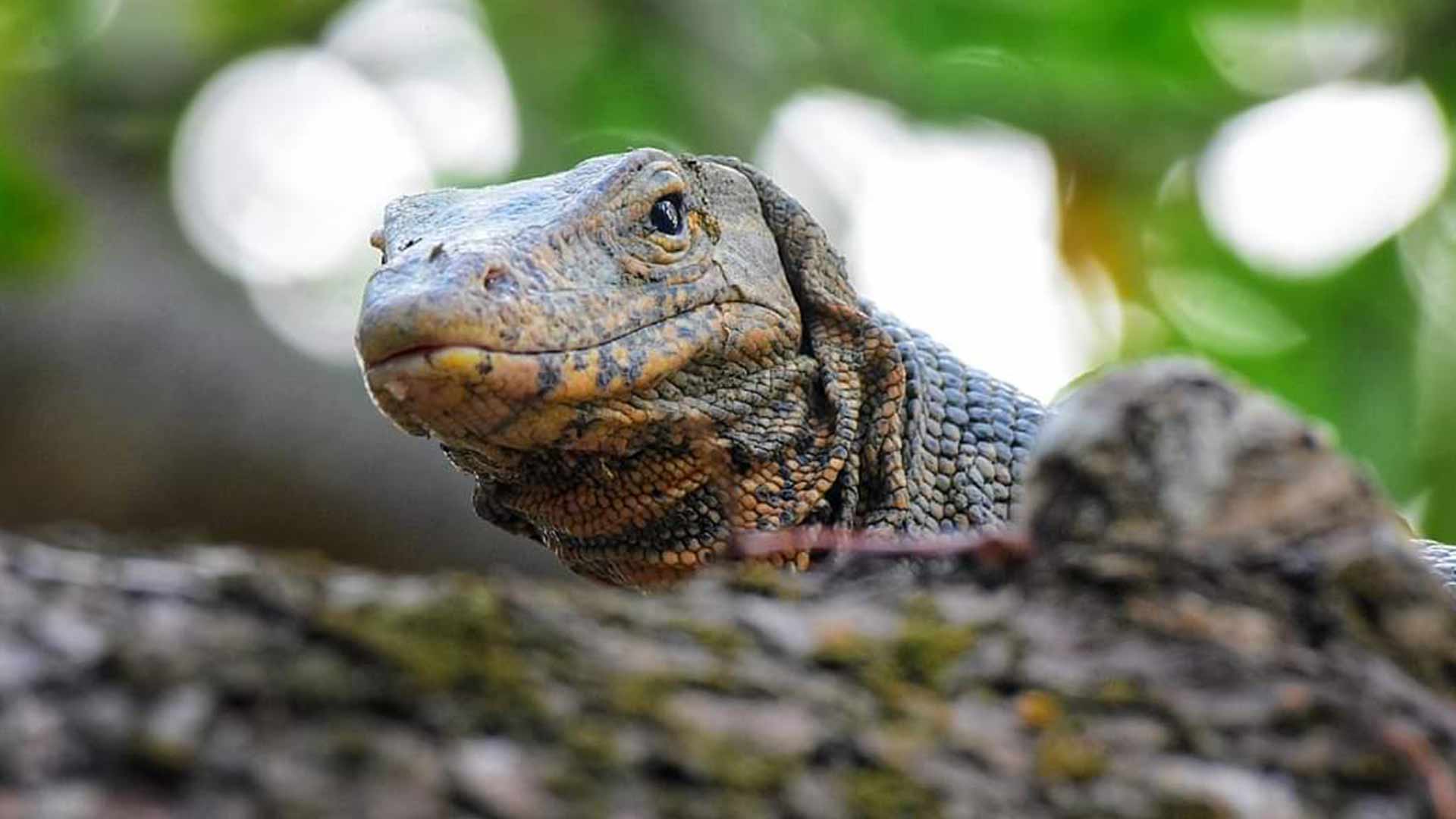By: AL -MARUF
In the past, we frequently observed Gussap in Bangladesh’s forests, bushes, and agricultural regions. Currently, it remains largely unexplored. This innocuous and advantageous creature is on the brink of extinction from our surroundings due to multiple factors.
Zoologists contend that human activities are to blame for the extinction of this harmless species. The impact of the Monitor Lizard on us is minimal. Maximum advantage. This animal plays a crucial role in preserving the equilibrium of the environment. It safeguards us from assaults by consuming venomous snakes in our vicinity.
Despite being referred to as monitor lizards, these organisms do not possess the actual characteristics of snakes. Nevertheless, their saliva is toxic due to the presence of pathogenic germs. Presently, three gossip species persist in some capacity. The aforementioned species include the Black Monitor Lizard, Gold Monitor Lizard, and Ramgadi. Monitor Lizard Black Gussup is prevalent in the vicinity of rural farms.
We can classify Ramadi, also known as the Big Monitor Lizard, as a giant chameleon. Its maximum height might reach up to 10 and a half feet.
However, its mean length is approximately 4 feet and 11 inches. The maximum allowable weight is 25 kilogrammes, but the majority of them weigh only half of that.
Gooey or ramgadi of considerable size exhibit a dark brown or black hue accompanied by yellow rings. They have long legs and nails. The tail shows a flat and pointed shape. They can rapidly ascend trees. Swimming is a convenient method for traversing canals and bile ponds. India, Sri Lanka, Indonesia, and China are home to the Large Monitor Lizard species.
You can find the Gold Monitor Lizard near Howr and Bill. Monitor lizards are predominantly land-dwelling creatures. Their habitats consist of earth cavities, mounds, tree bark, and fissures. We can also observe them in aquatic environments. They possess the ability to swim and ascend trees. They prefer to consume poisonous snakes and hazardous insects. In addition to crabs, snails, and rodents, other food sources encompass decomposing animal corpses and bits.
The consumption of fish, snakes, frogs, and birds by the large monitor lizard In addition, their diet includes tiny crocodiles, crocodile eggs, and turtles. If given the opportunity, several small snakes, frogs, mice, fish, earthworms, snails, crabs, and other organisms have been observed to attack chicken chicks and eggs. The Monitor Lizard is an innocuous species that elicits a swift departure from individuals upon sighting it.
The Monitor Lizard enhances agricultural productivity by consuming venomous snakes and detrimental insects. It plays an unmatched role in maintaining the balance of nature and has a distinct function in the food chain. A drop in their population will lead to a rise in the population of primary-feeding insects, resulting in higher production of rats and creating a favourable environment for dangerous snakes. This is highly detrimental to both the environment and human well-being.
Currently, extensive pesticide use on crops for insect control kills several beneficial microorganisms and degrades soil quality. Crops emit trace amounts of pollutants that gradually pose a threat to human health. Conversely, Monitor Lizard has superior efficacy compared to these pesticides and does not cause any harm. It maintains environmental cleanliness by consuming deceased animals.
This advantageous creature is facing imminent extinction. A significant number of its species have become extinct. The three entities presently enduring may cease to exist within a few days. The causes of their disappearance include illegal hunting, overuse of chemicals, deforestation, and the detrimental impact of the Howrah Bill on the ecosystem. The destruction of breeding sites and habitats has led to the demise of the Monitor Lizard.
The skin of the monitor lizard possesses commercial value. Women’s vanity purses commonly employ Monitor Lizard leather. Poachers capture and abscond with GUI snakes for commercial purposes. The monitor lizard is highly sought-after internationally.
The majority of them perish as a result of human assaults. In the pursuit of sustenance, ducks resort to physical aggression by employing sticks to inflict fatal injuries on eggs and chicks. Sometimes, they lure an iron trap with dehydrated fish or dead chicks. Certain individuals use different components of the Gui snake to produce Kaviraji medication. Certain indigenous cultures engage in hunting as a means of sustenance. We are witnessing the disappearance of the beneficial animal.
It is crucial to preserve the monitor lizard. We must implement stringent measures to mitigate the phenomenon of hunting and trafficking. It is imperative to generate public consciousness to combat illicit hunting. If deemed required, television and newspaper advertisements should be provided to safeguard beneficial animals. The preservation of this valuable creature from extinction can be achieved through a collaborative effort involving the government, individuals, and advocates for animal rights.

